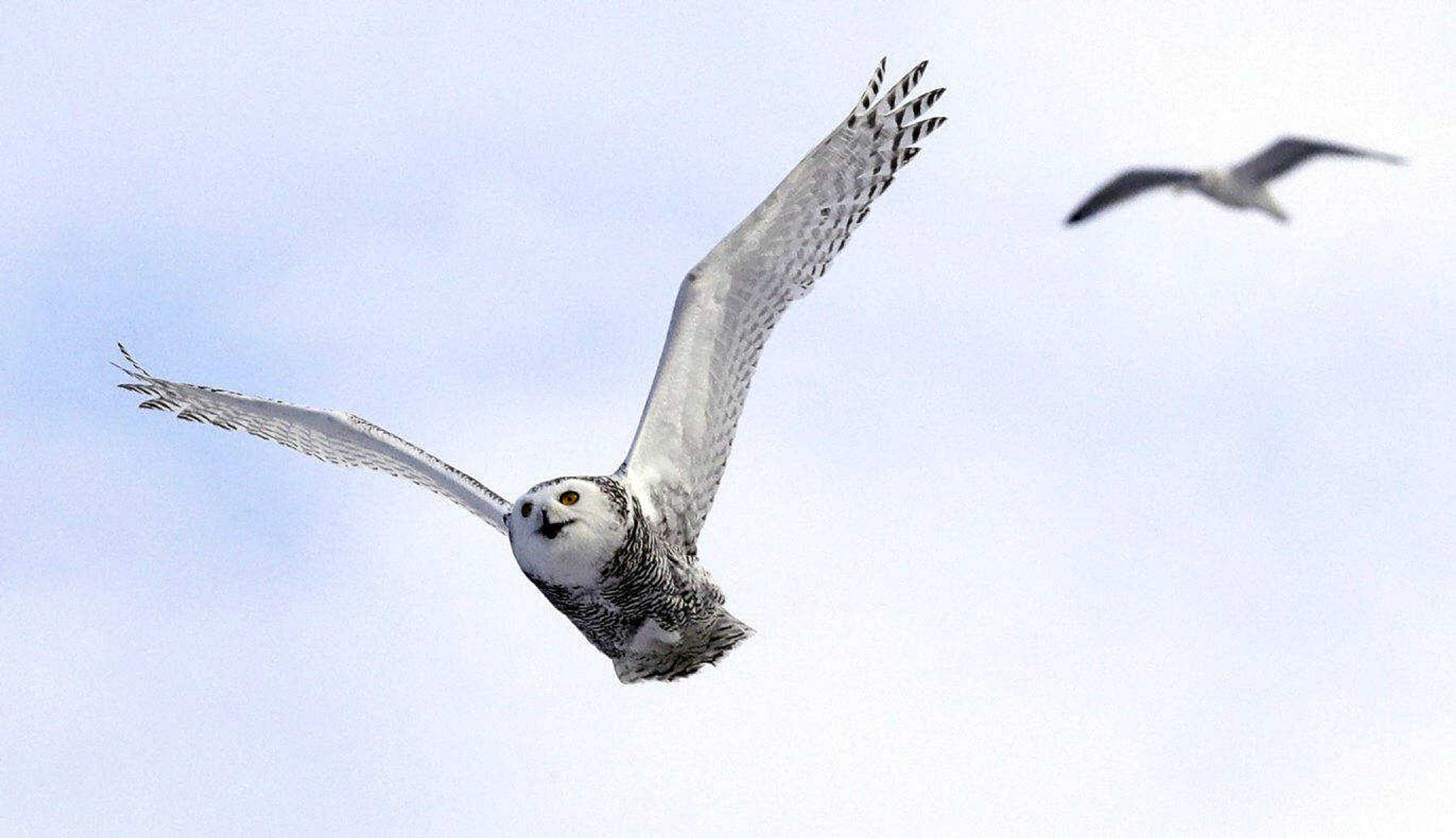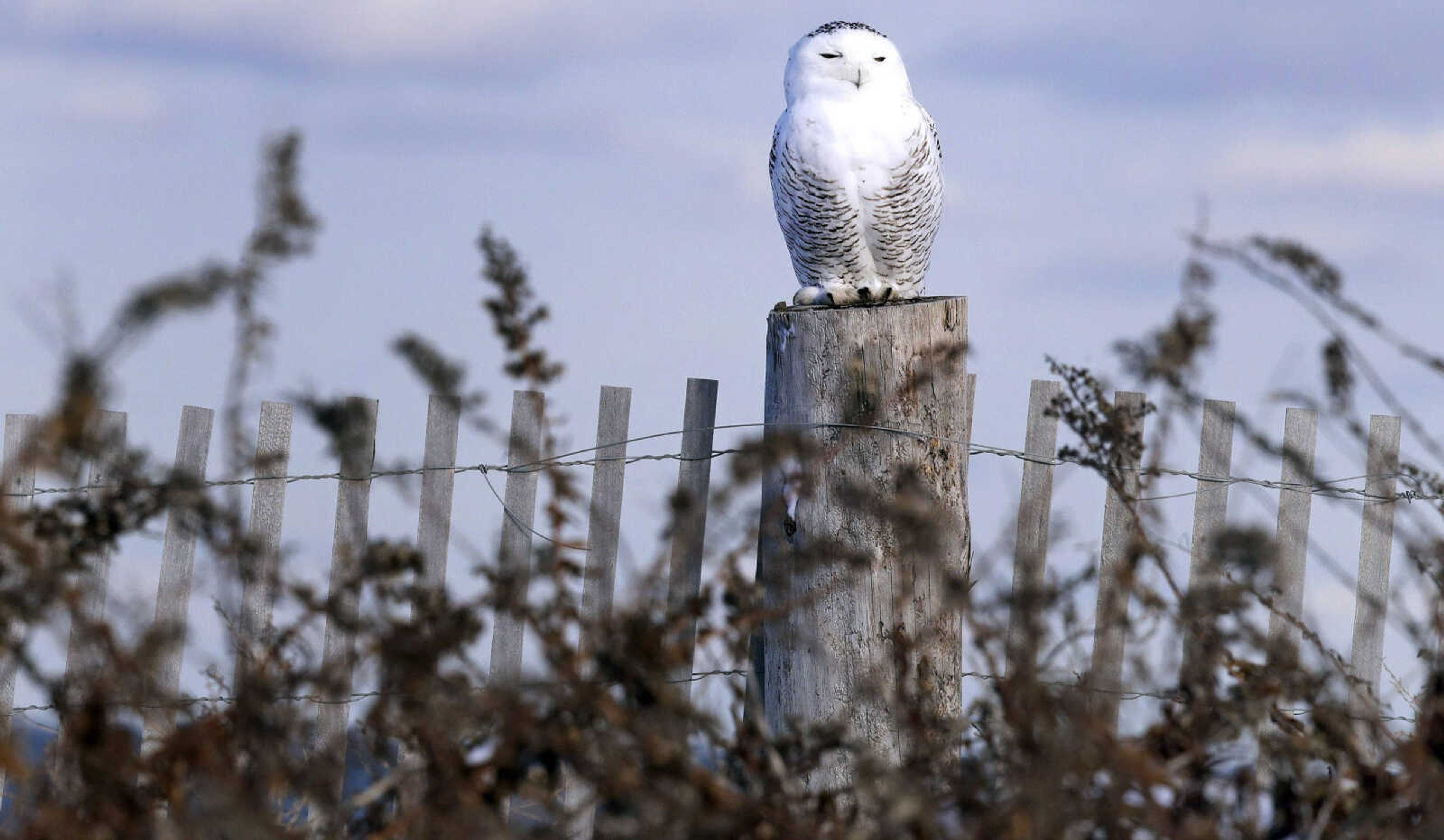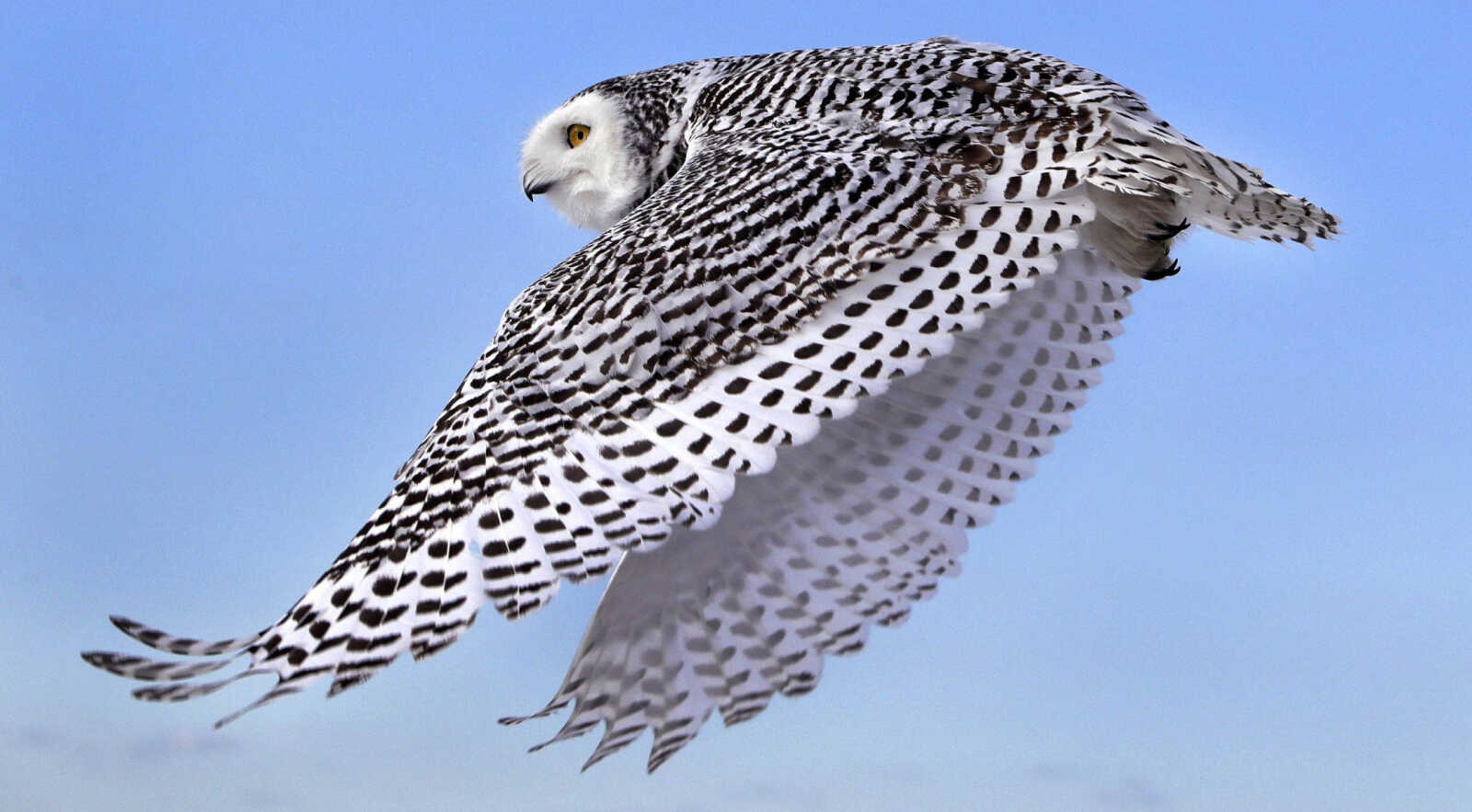Snowy owl near St. Louis drawing lots of interest
WEST ALTON, Mo. -- A young snowy owl is generating a lot of excitement near St. Louis. The species is spotted in Missouri only during mass migration years, which are known as irruptions. Missouri Department of Conservation ornithologist Sarah Kendrick told the St. Louis Post-Dispatch that this year, there have been several reports of the distinctive owls in fields, along lakes and on light posts in the state...
WEST ALTON, Mo. -- A young snowy owl is generating a lot of excitement near St. Louis.
The species is spotted in Missouri only during mass migration years, which are known as irruptions. Missouri Department of Conservation ornithologist Sarah Kendrick told the St. Louis Post-Dispatch that this year, there have been several reports of the distinctive owls in fields, along lakes and on light posts in the state.
Among those drawing attention is a young female owl in West Alton, about 15 miles north of St. Louis and thousands of miles from her usual Arctic home. Birders have gathered at the Riverlands Migratory Bird Sanctuary for a glimpse of the owl.
"I'm guessing this is where the celebrity is," Adam Hartz said recently as he approached a group of about 20 people gathered on the side of the road at the sanctuary, quietly peering through scopes and cameras.
"She's here all right," said a man pointing to the striking white bird, which had been sitting for hours at the same spot, turning her head and blinking her startlingly yellow eyes.

Like many of the birders, 17-year-old high-school student John Nash of University City has visited the spot multiple times, adding the owl to his list of 296 bird species he has spotted. The owl has been in West Alton since November.
"It's such an iconic bird," Nash said. "I'd always wanted to see a snowy, and now I got to cross it off my life list. It's just really cool it's here."
Nash's 14-year-old brother, Tim Nash, sat in the car eating a sucker and looking at his phone.
"I'm not a birder," he said.
Snowy owls have been spotted throughout the Midwest and Northeast this year. Researchers believe the influx is the result of surges in the owl's main food source, lemmings, which are rodents that live under Arctic snowpack.

About every three or four years, the owl population increases when the lemmings are more abundant. The result is more birds than usual will winter south of Canada.
Still, instead of 300,000 snowy owls worldwide, as long believed, The Associated Press reported this month researchers believe the population is likely closer to 30,000 or fewer. The previous estimate was based on how many might be able to breed in a given area.
That calculation was made assuming snowy owls acted like other birds, favoring fixed nesting and wintering sites. But researchers discovered the owls are nomads, often nesting or wintering thousands of miles from previous locations.
The miscalculation doesn't necessarily mean snowy owls, which can grow to about 2 feet long with 5-foot wingspans, are in decline. Scientists simply don't know because they never had an accurate starting point.
In Missouri, word spread online about the snowy owl at West Alton. Fifteen to 30 people are regularly there to see the owl, said Audubon Center at Riverlands director Ken Buchholz.
"It's wonderment," he said. "We get people who are so excited, and actually a lot of kids. I think it's because it's the same bird from the Harry Potter movies."
The bird often can be viewed in the middle of the day because, unlike other owls, snowy owls are day hunters that have had to adapt to the long daylight of Arctic summers. Many spectators come with cameras.
"It's like the bird paparazzi," said Jean Favara, conservation manager at the center.
Information from: St. Louis Post-Dispatch, http://www.stltoday.com
Pertinent address:
West Alton, Mo.
Connect with the Southeast Missourian Newsroom:
For corrections to this story or other insights for the editor, click here. To submit a letter to the editor, click here. To learn about the Southeast Missourian’s AI Policy, click here.








